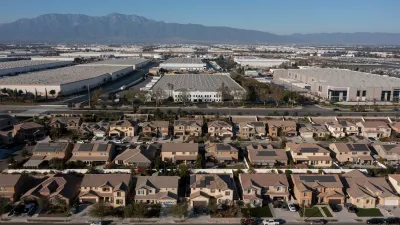Ben Welle discusses the benefits of freeway removal programs both at home and abroad, and explores what cities have done to fill the void they leave behind.
As cities across the globe confront the question of how to serve a growing population, the outright demolition of existing freeways seems a counterintuitive, backward step. But a report released last month demonstrates otherwise, highlighting freeway removal projects in five major cities (Portland, San Francisco, Milwaukee, Seoul, and Bogotá). Published by sustainable transportation groups EMBARQ and the Institute for Transportation and Development Policy, the report underscores the benefits that freeway removal confers to the public – provided something is done to compensate for the lost infrastructure.
"Freeway removal is really about shifting priorities from moving cars to moving people," Welle writes, pointing to improvements in public health. When Portland did away with the Harbor Drive Expressway, for example, it restored public access to the adjoining Willamette River with the creation of the Tom McCall Waterfront Park. "The park now has roughly 1.6 million users per year, with people running, biking, walking their dogs, playing Frisbee, and attending major events and the park's Saturday market."
By replacing freeways with green space, cities can also mitigate heat islands and improve air quality. The elimination of the Cheonggyecheon Expressway in Seoul "led to a reduction of the heat island effect by as much as 8 degrees Celsius, according to summertime measurements in comparison to nearby paved roadway conditions," while the concentration of certain nearby air pollutants fell by as much as one-fifth.
But in order for freeway removal to work, cities must implement measures to restore the capacity of the transportation network. Officials in Seoul did so by beefing up the reach and efficiency of transit, expanding bus-only lanes and better integrating bus and subway service. Notably, as transit service improved, traffic accidents fell by one-third. "The number of vehicles passing through downtown decreased 9 percent after a bus rapid transit (BRT) system and aggressive Transportation Demand Management (TDM) measures were implemented as part of the project," Welle adds.
FULL STORY: Freeway Removal Creates Opportunity for Improved Health, Quality of Life

Alabama: Trump Terminates Settlements for Black Communities Harmed By Raw Sewage
Trump deemed the landmark civil rights agreement “illegal DEI and environmental justice policy.”

Planetizen Federal Action Tracker
A weekly monitor of how Trump’s orders and actions are impacting planners and planning in America.

The 120 Year Old Tiny Home Villages That Sheltered San Francisco’s Earthquake Refugees
More than a century ago, San Francisco mobilized to house thousands of residents displaced by the 1906 earthquake. Could their strategy offer a model for the present?

Ken Jennings Launches Transit Web Series
The Jeopardy champ wants you to ride public transit.

BLM To Rescind Public Lands Rule
The change will downgrade conservation, once again putting federal land at risk for mining and other extractive uses.

Indy Neighborhood Group Builds Temporary Multi-Use Path
Community members, aided in part by funding from the city, repurposed a vehicle lane to create a protected bike and pedestrian path for the summer season.
Urban Design for Planners 1: Software Tools
This six-course series explores essential urban design concepts using open source software and equips planners with the tools they need to participate fully in the urban design process.
Planning for Universal Design
Learn the tools for implementing Universal Design in planning regulations.
Clanton & Associates, Inc.
Jessamine County Fiscal Court
Institute for Housing and Urban Development Studies (IHS)
City of Grandview
Harvard GSD Executive Education
Toledo-Lucas County Plan Commissions
Salt Lake City
NYU Wagner Graduate School of Public Service





























